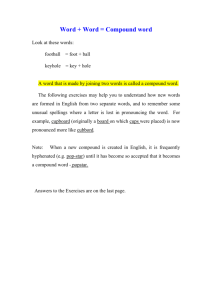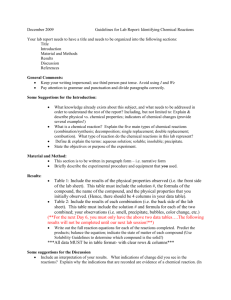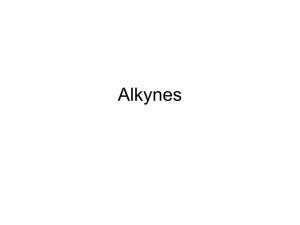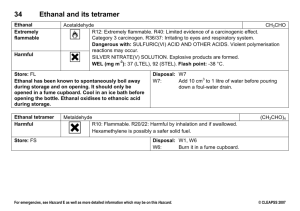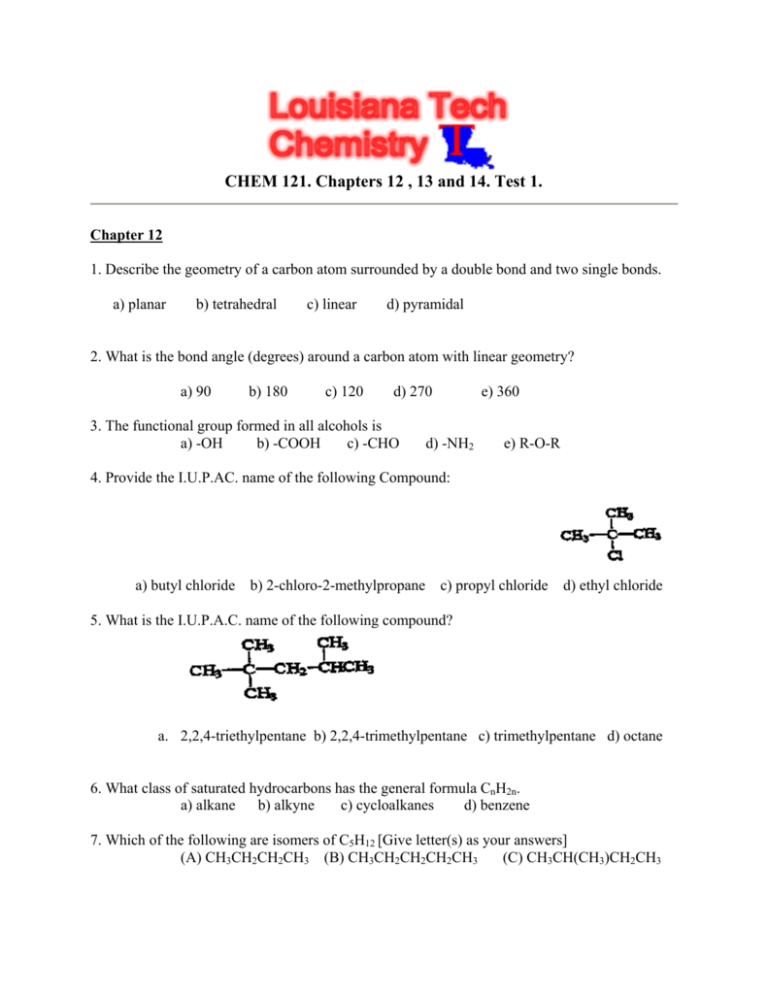
CHEM 121. Chapters 12 , 13 and 14. Test 1.
Chapter 12
1. Describe the geometry of a carbon atom surrounded by a double bond and two single bonds.
a) planar
b) tetrahedral
c) linear
d) pyramidal
2. What is the bond angle (degrees) around a carbon atom with linear geometry?
a) 90
b) 180
c) 120
d) 270
3. The functional group formed in all alcohols is
a) -OH
b) -COOH
c) -CHO
d) -NH2
e) 360
e) R-O-R
4. Provide the I.U.P.AC. name of the following Compound:
a) butyl chloride
b) 2-chloro-2-methylpropane c) propyl chloride
d) ethyl chloride
5. What is the I.U.P.A.C. name of the following compound?
a. 2,2,4-triethylpentane b) 2,2,4-trimethylpentane c) trimethylpentane d) octane
6. What class of saturated hydrocarbons has the general formula CnH2n.
a) alkane b) alkyne
c) cycloalkanes
d) benzene
7. Which of the following are isomers of C5H12 [Give letter(s) as your answers]
(A) CH3CH2CH2CH3 (B) CH3CH2CH2CH2CH3
(C) CH3CH(CH3)CH2CH3
(D)
(E) CH3CH(CH3)4
a. A b. B and B c. B, C, and D d. A, B and E
8. Describe the geometry (shape) of a carbon atom surrounded by four single bonds.
a) planar
b) octahedral
c) linear
d) tetrahedral
9. Name the families of organic compounds that contain a carbonyl group (C=O) .
a) alkane
b) alcohols
c) aldehydes or ketones
d) ethers
10. How many moles of water are produced by the complete combustion of methane (CH4)?
(hint write the chemical equation)
a) 1
b) 2
c) 3
d) 4
11. What is the term used to describe organic reaction in which an atom in a molecule is replaced
by a new atom?
a) addition
b) elimination
c) substitution
d) combustion
Chapter 13
1. Which of the following is the I.U-P.A.C. name of the simplest alkene?
a. ethane
b. methene
c. ethyne
d. acetylene
e. ethene
2. Which of the following is the I.U.P.A.C. name of the simplest alkyne?
a. ethane b. ethyne c. methyne
d. acetylene
e. propyne
3. How many molecules of hydrogens must be added to convert one molecule of ethene to
ethane?
a. 0.5
b. 1
c. 2
d. 3
e. 8
4. Which of the following general formulas is used to find the molecular formula of any alkene?
c. C2nH2n d. CnH2n-4 e.
a. CnH2n b. CnH2n-2
CnH2n+2
5. What is the I.U.P.A.C. name of the following compound: CH3-C≡ C-H
a. propene b. ethene
acetylene e. butyne
c. propyne
d.
6. Provide the I.U.P.A.C. name of the following compound:
a. butene b. cis-2-butene
Answer: B
c. trans-2-butene
d. propene
e. cis-1,2-butene
7. Which of the following types of compounds is produced by the hydration of an alkene?
a. an alkyne
b. a phenol c. an alcohol d. an aldehyde e. a ketone
8. Which of the following is the molecular formula of benzene?
e. C6H6
a. C5H12 b. C6H14 c. C5H10 d. C6H10
9. Which of the following reactions is used to convert alkenes to alkanes?
a. addition b. substitution c. hydrogenation c. hydration e. oxidation
10. Which of the following is the correct molecular formula of 1-pentene?
a. C4H8 b. C5H8 c. C5H12 d. C5H10 e. C5H6
11 . Draw the structure of following compounds
a. p-Xylene
b. Isopropylbenzene
c. m-Nitroanisole
d. p-Methylbenzaldehyde
Chapter 14
1. Which of the following is the general structure for any alcohol?
a. ROH
b. ROR
c. RSH
d. RCOH
e. RCOR
2. Which of the following is the I.U.P.A.C. name of the following compound: CH3CH(OH)CH3?
a. propanol b. 2-propanol c. isopropyl alcohol
d. 2-butanol e. 1-propanol
3. Which of the following is the I.U.P.A.C. name of the following compound?
a.. 2-methyl-3-hexanol d. 2-methyl-3-pentanol
b. 5-methyl-4-hexanol e. 2,2-dimethyl-3-pentanol
c. 3-methyl-2-hexanol
4. Which of the following is the I.U.P.A.C. name of the following compound: HOCH2CH2OH?
a. methanol b. glycerol c. 1,2-ethandiol d. 1,2-ethanediol e. 1,1-diethanol
5. Provide the I.U.P.A.C. name for the product of the following reaction, which requires acid as a
catalyst:
CH2=CH2 + H2O Æ ?
a. ethanol
b. ethanal
c. methanal d. methanol
e. 1,2,3-propanetriol
6. Which of the following compounds is produced by the hydration of an alkene?
a. aldehyde
b. phenol c. alcohol d. diol e. acid
7. Which of the following is the starting material used to prepare formaldehyde?
a. methanoic acid b. ethanol c. ethanal d. methanol e. methanal
8. Which of the following is the I.U.P.A.C. name of wood alcohol?
a. methyl alcohol b. methanol c. methanal d. formaldehyde e. acetone
9. Which of the following is the I.U.P.A.C. name of the alcohol that can cause blindness and
perhaps death when it is consumed?
a. ethanal b. ethanol c. methanal d. methanol e. l,2,3-propanetriol
10. Which of the following is the I.U.P.A.C. name of the alcohol in alcoholic beverages?
a. propanone b. 2-propanol c. 1, 2-ethanediol d. ethanal e. ethanol
Frshmen Course Material
Chemistry Program, College of Engineering and Science
This page was last modified on November 25, 2008
This page was last updated December 6, 2008 by upali@vm.cc.latech.edu alias Upali Siriwardane, General
Chemistry, Chemistry Program, Louisiana Tech University, Ruston , LA 71272, USA.
© Copyright, Upali Siriwardane, 2008. All rights reserved.








